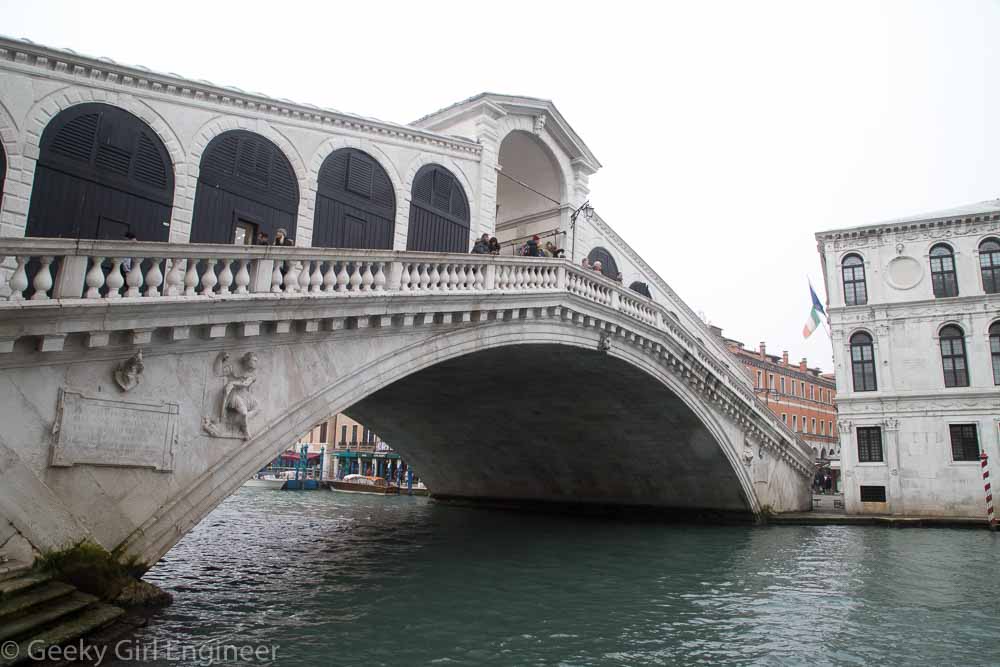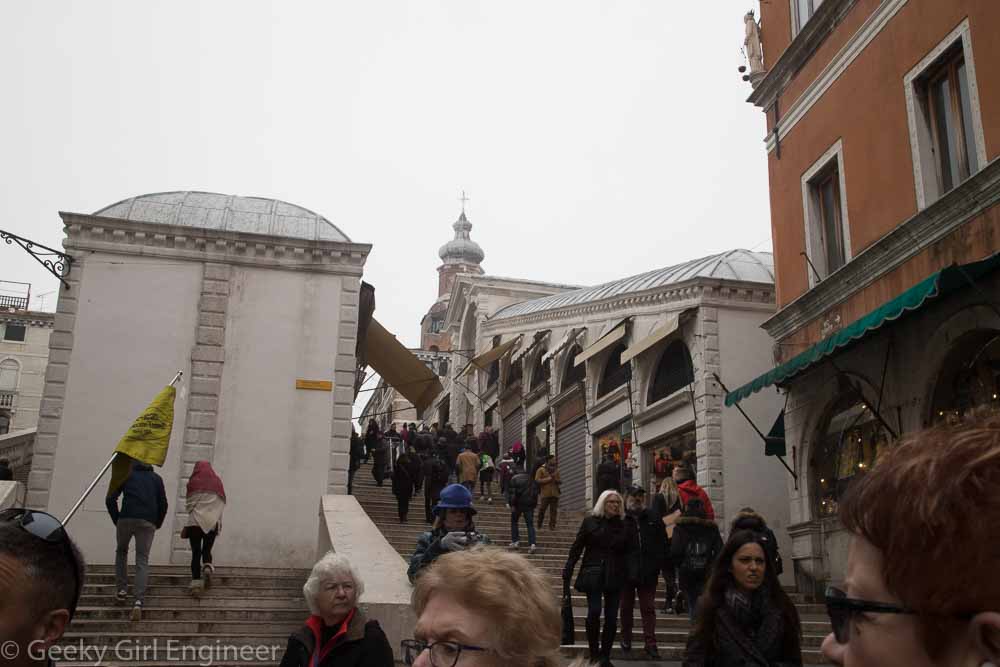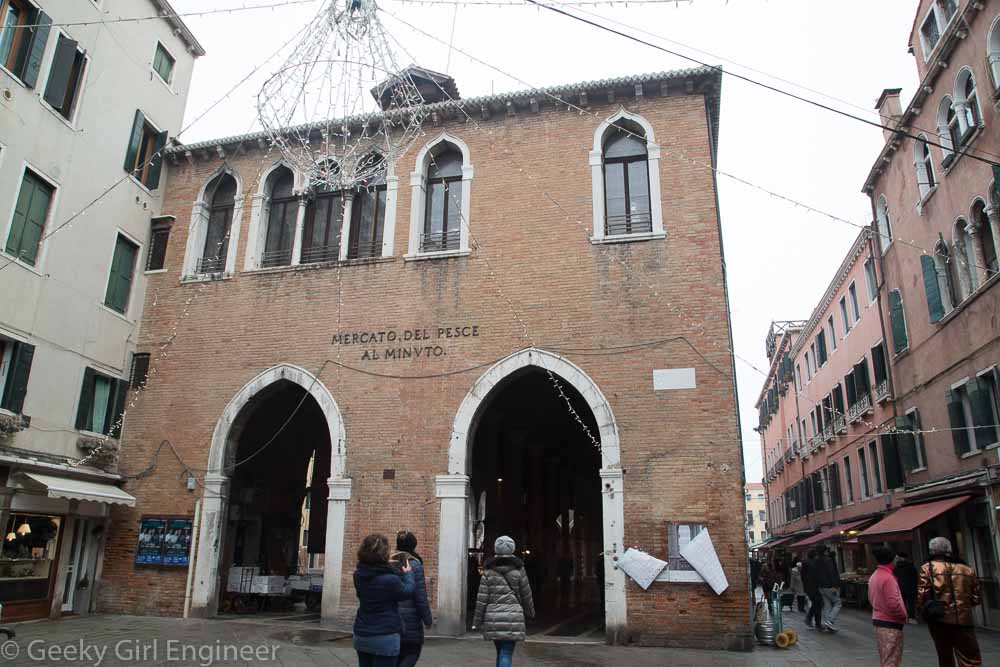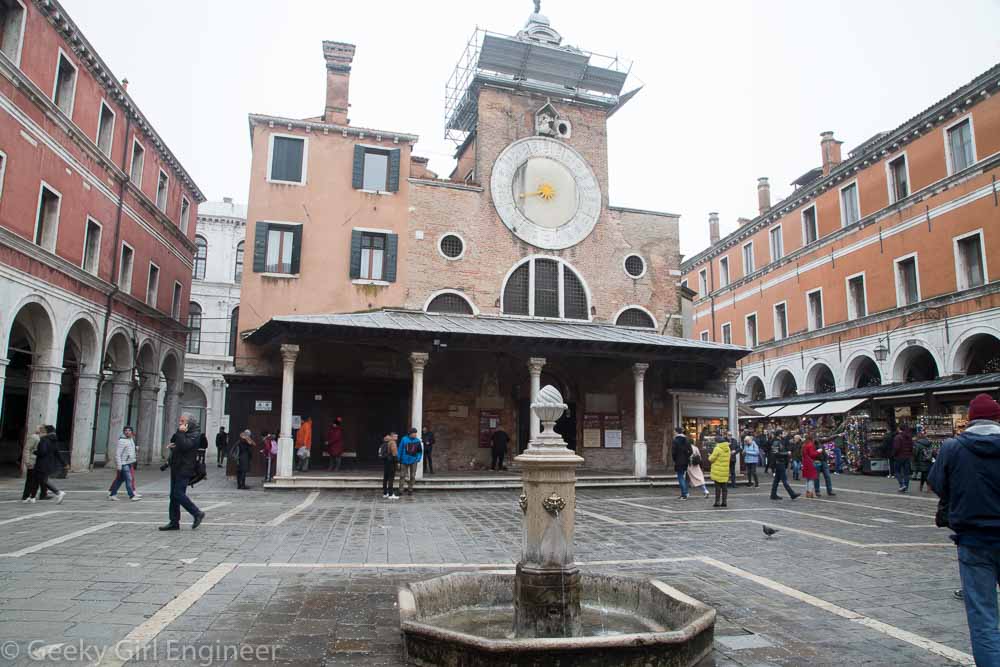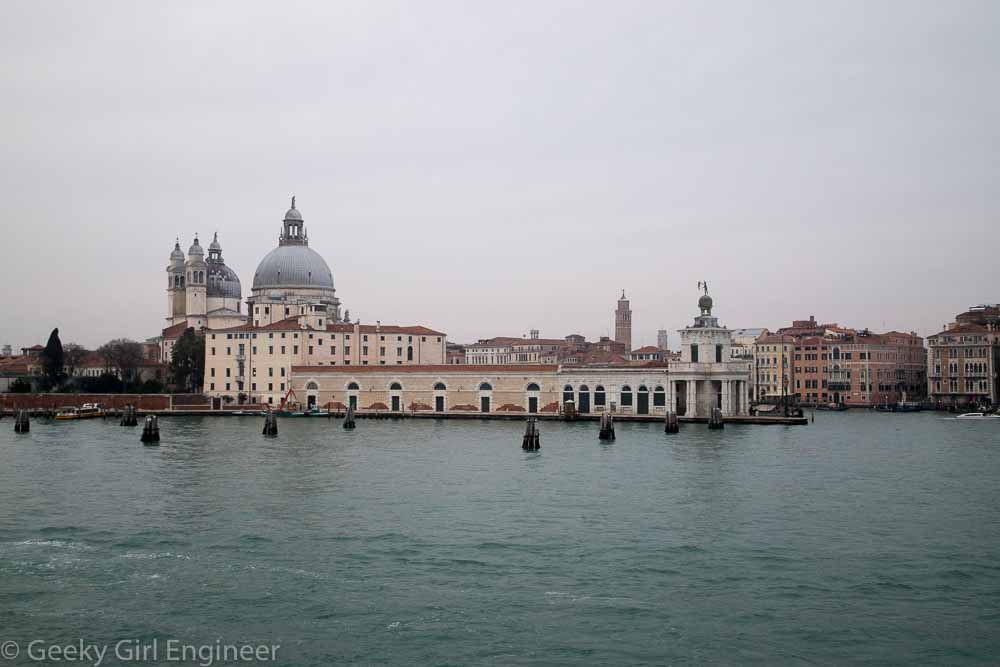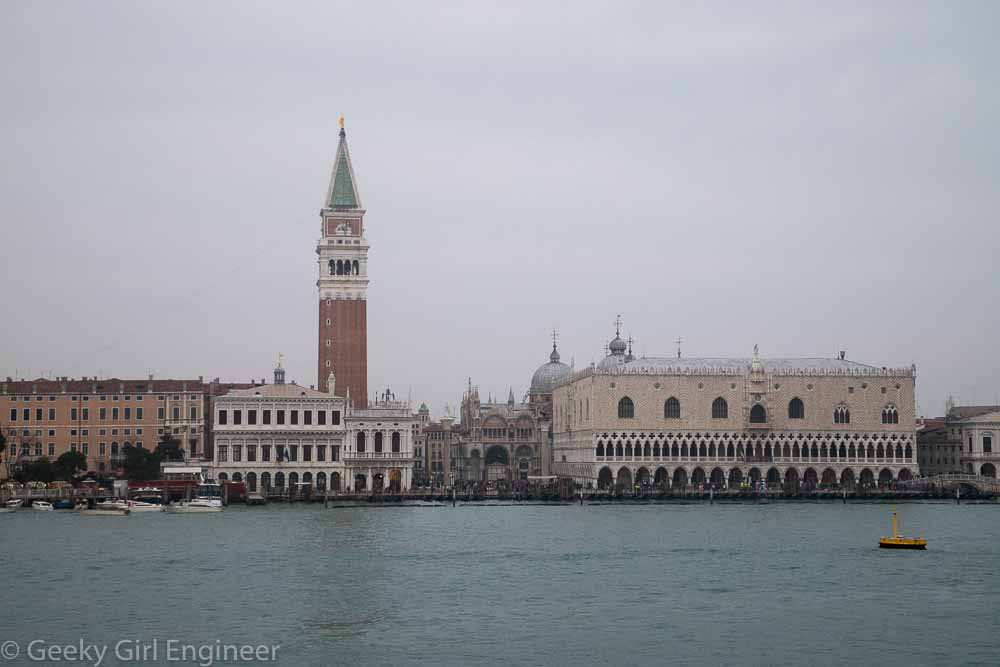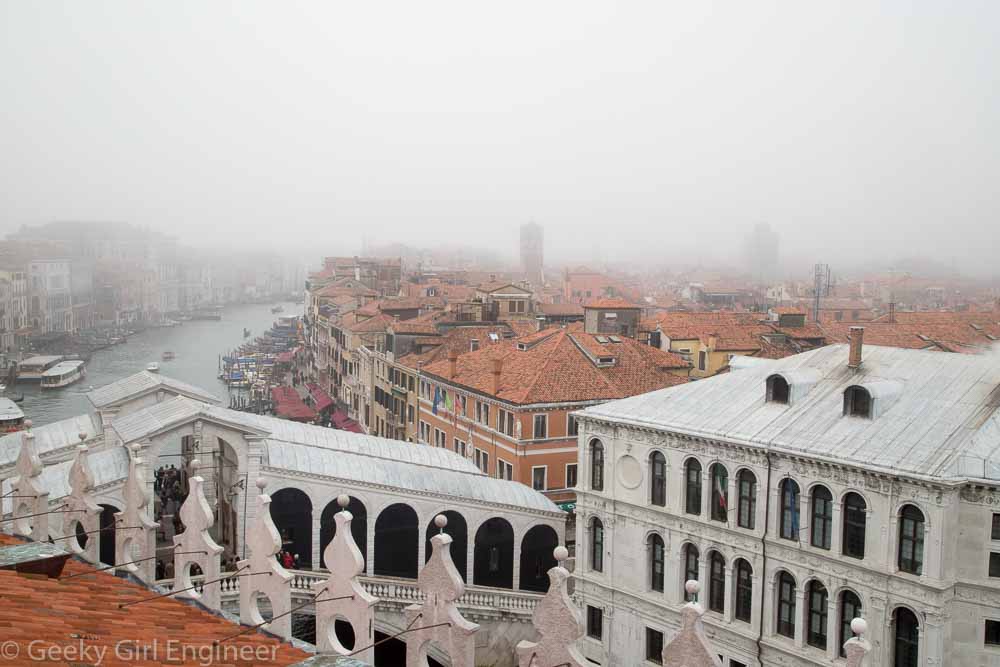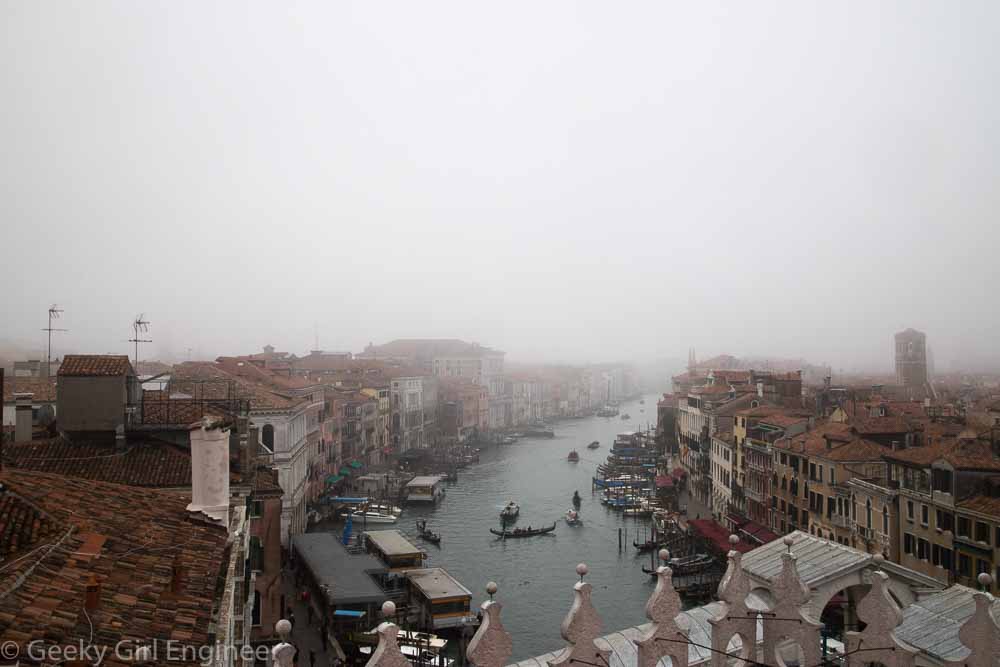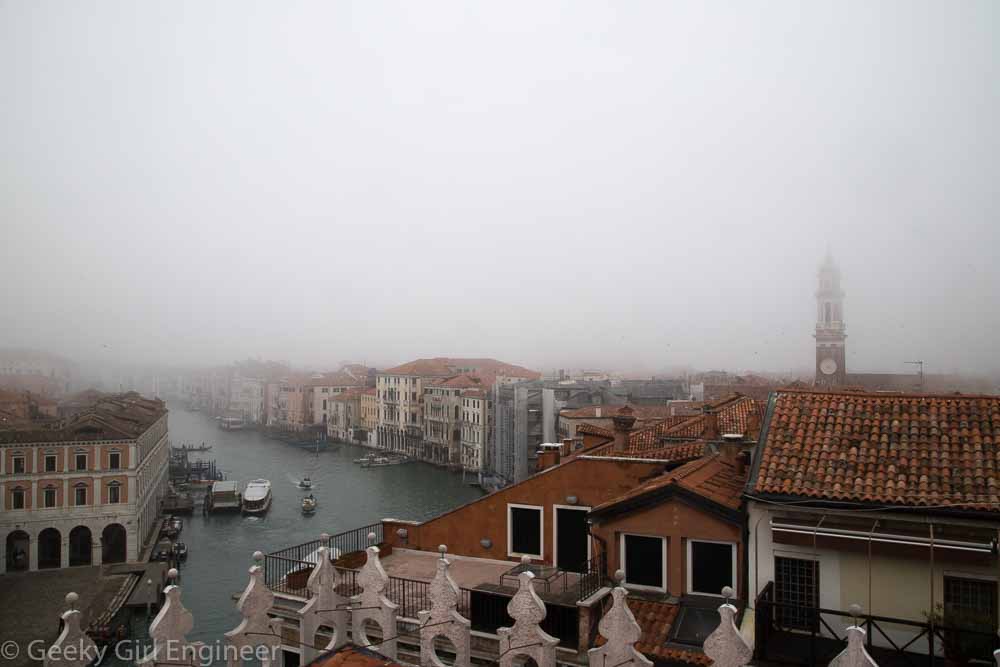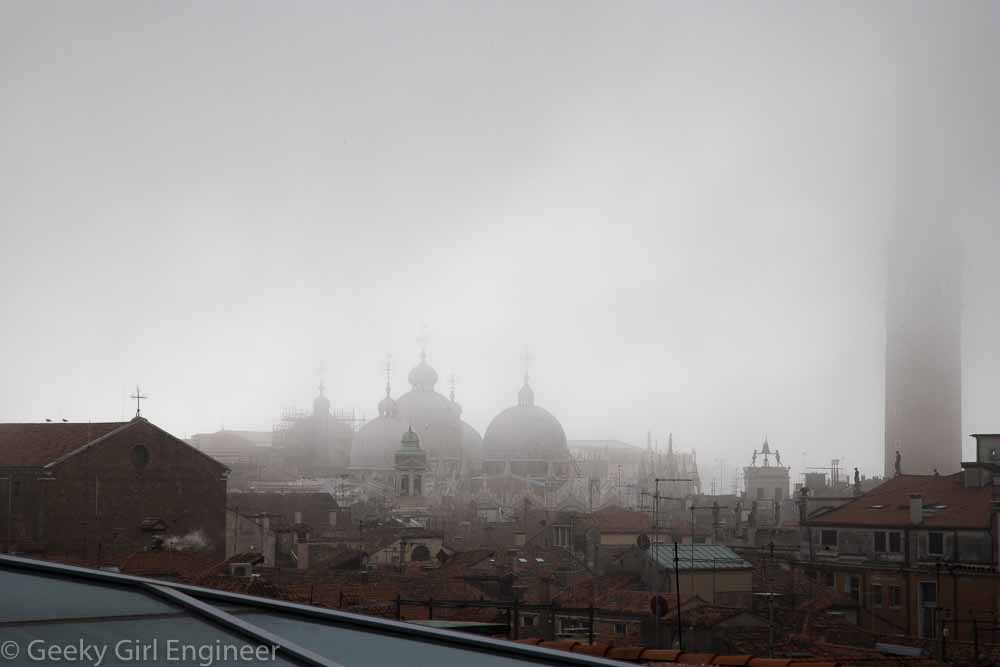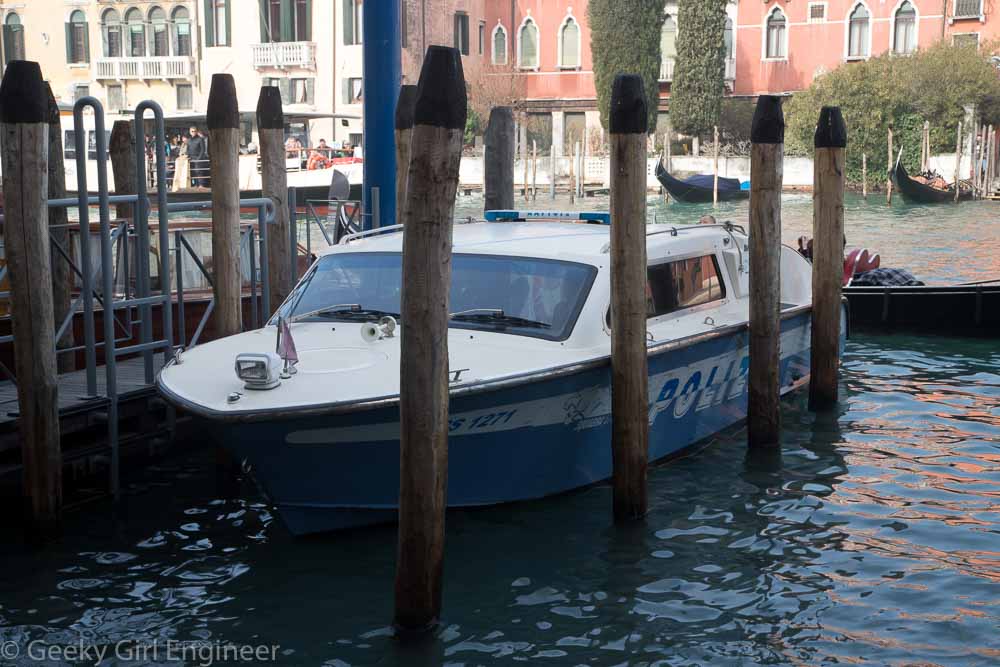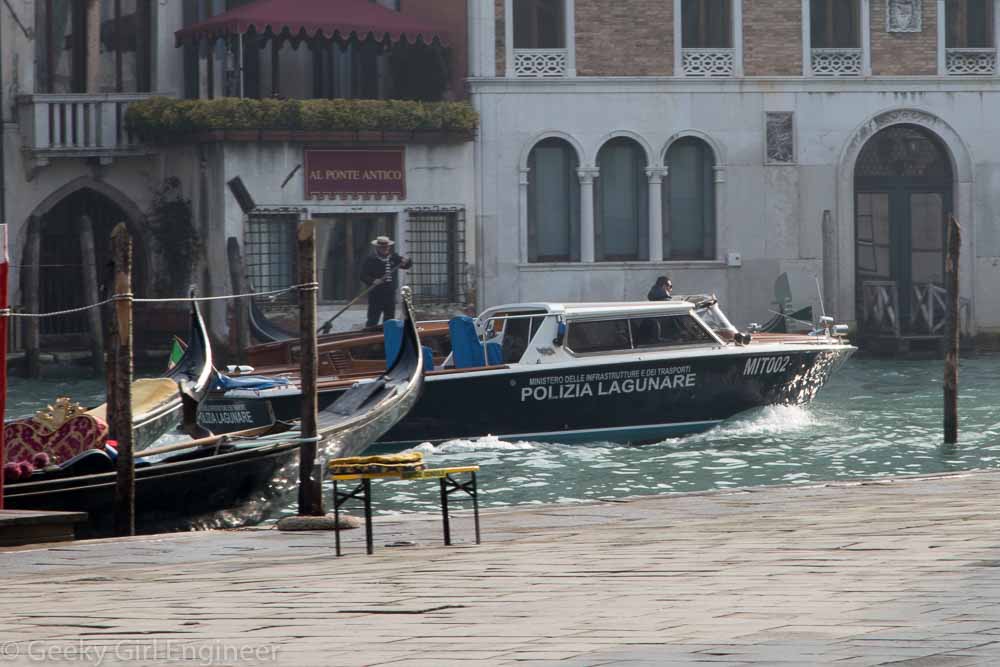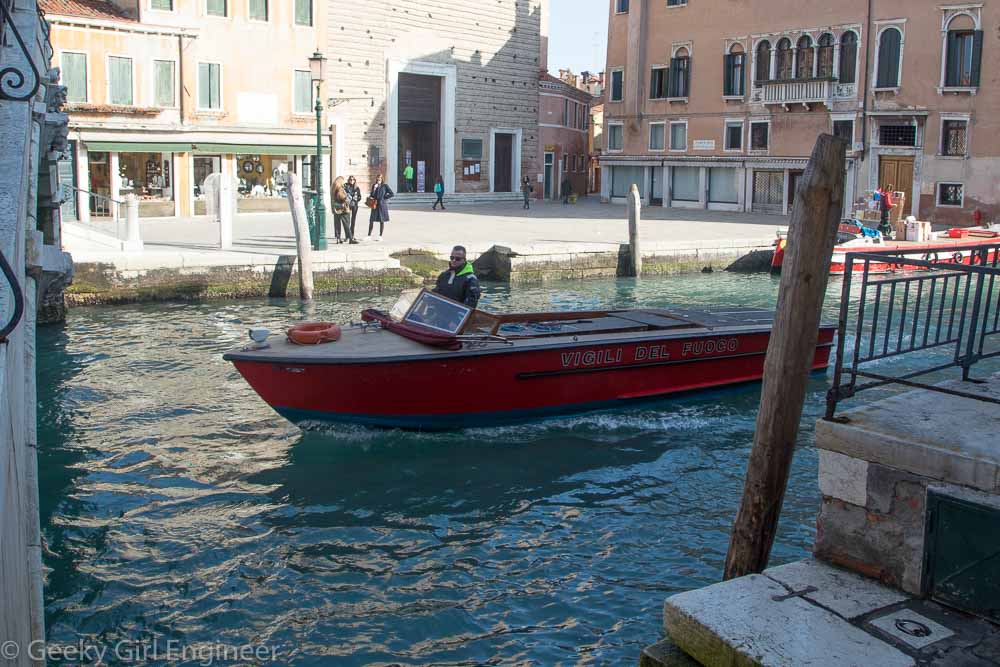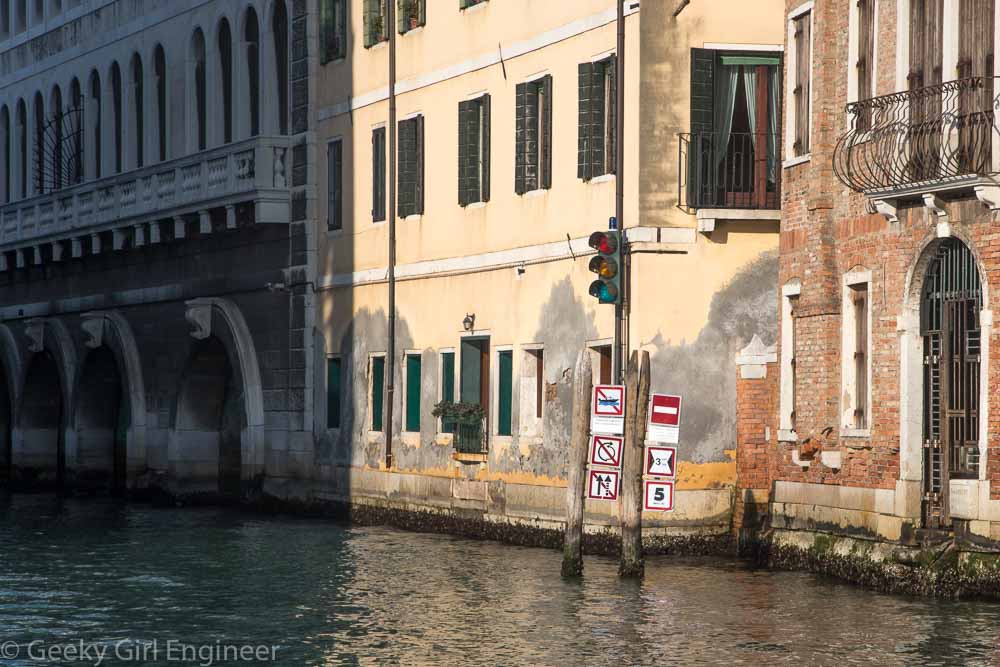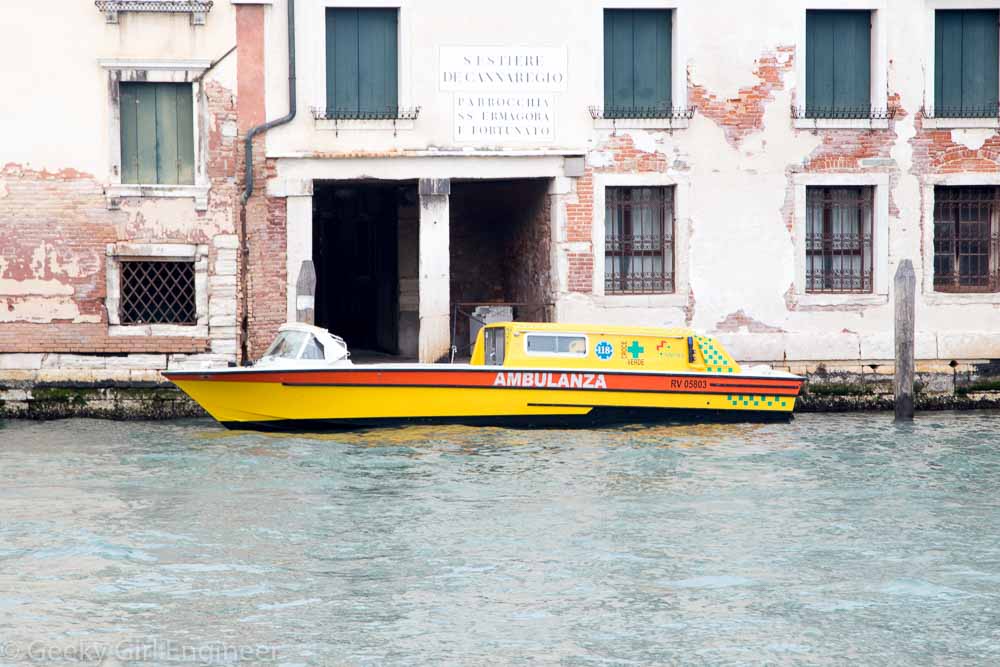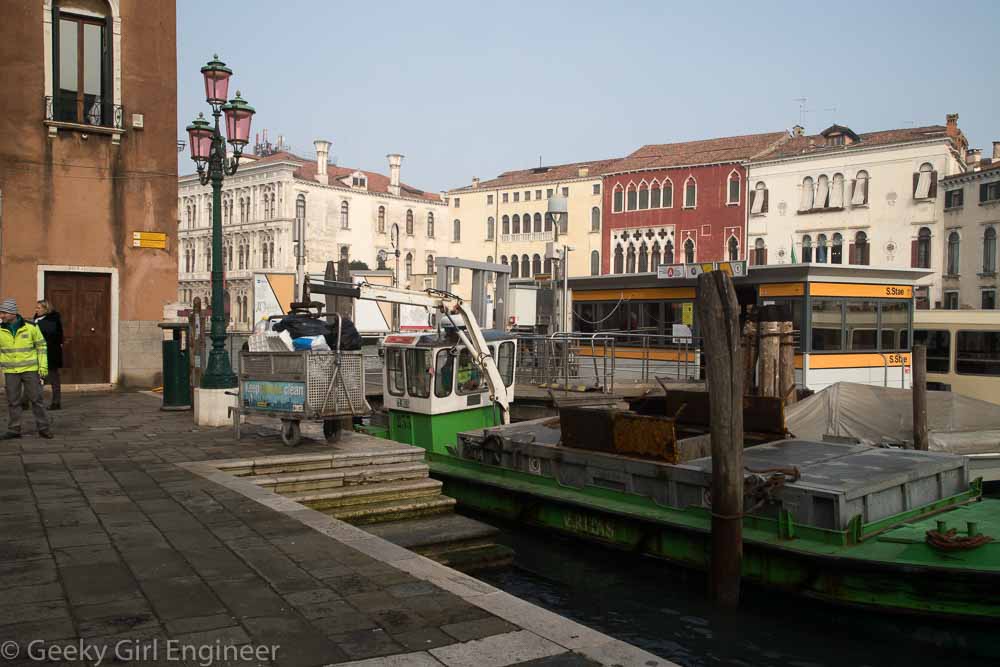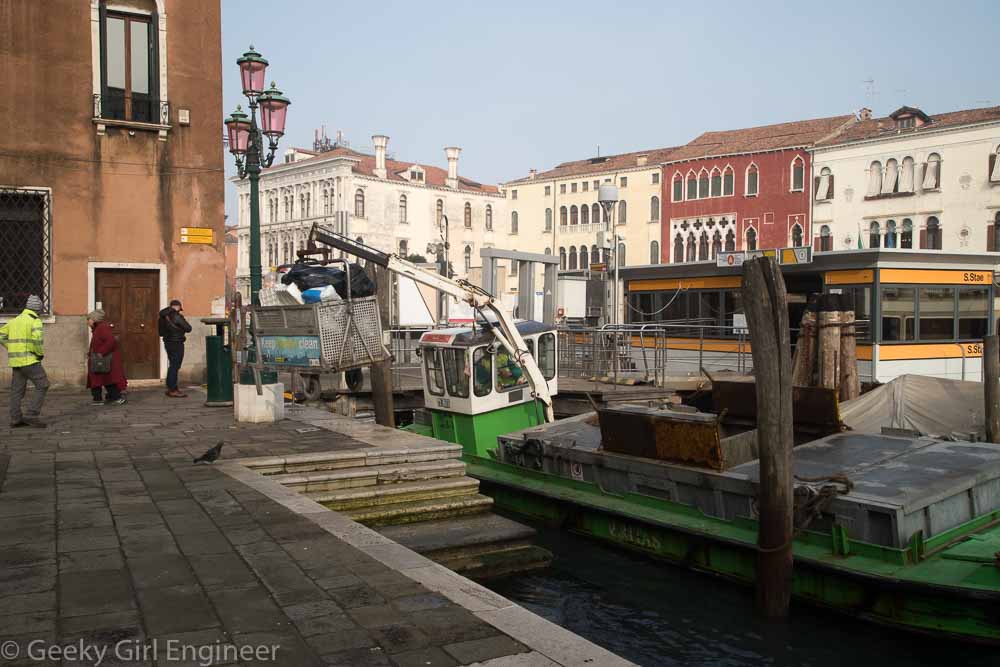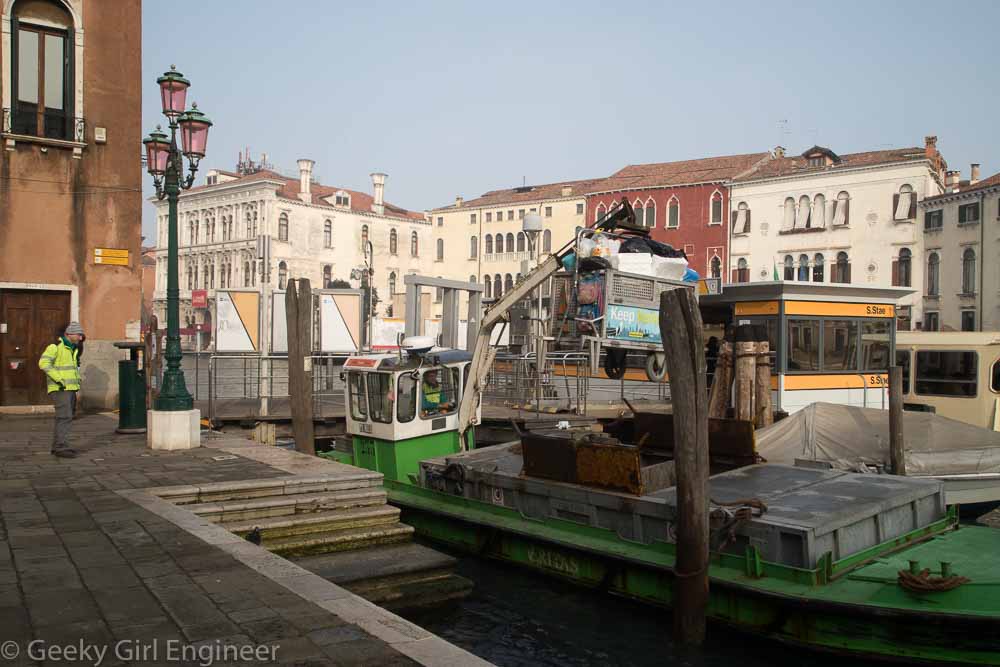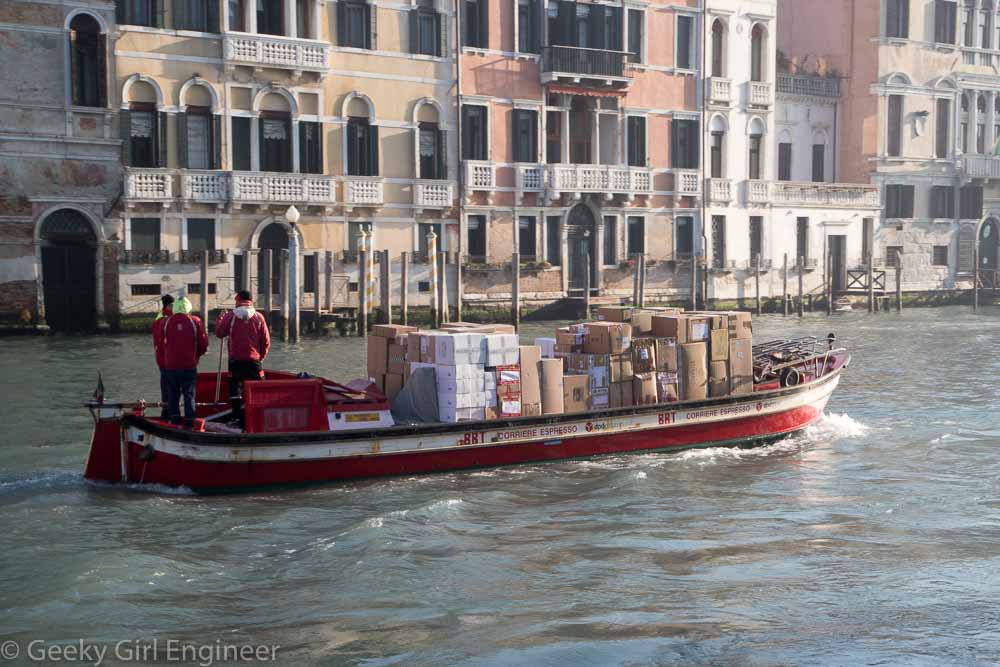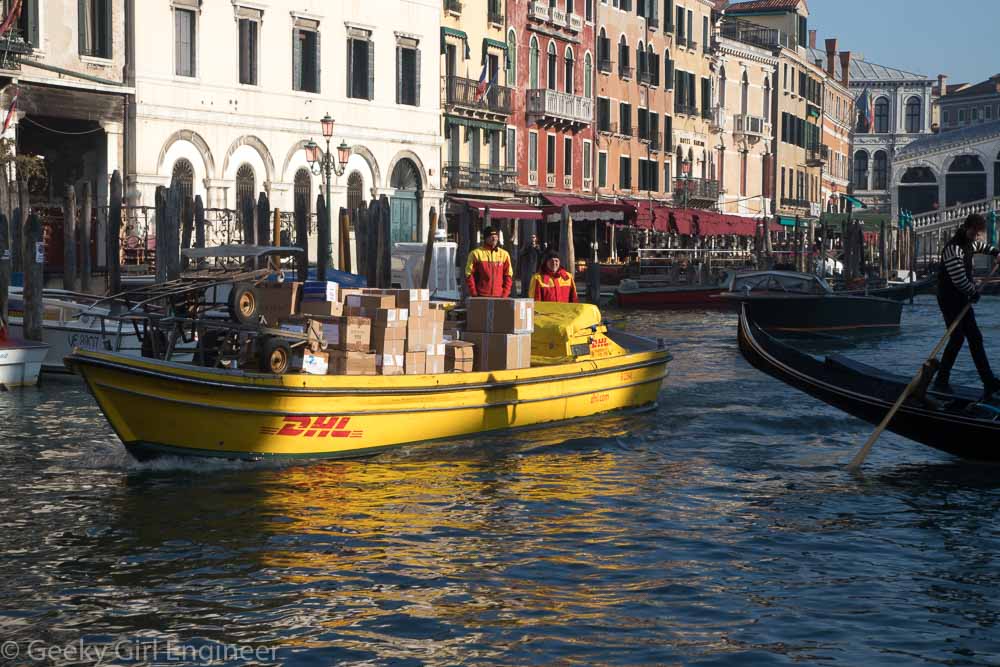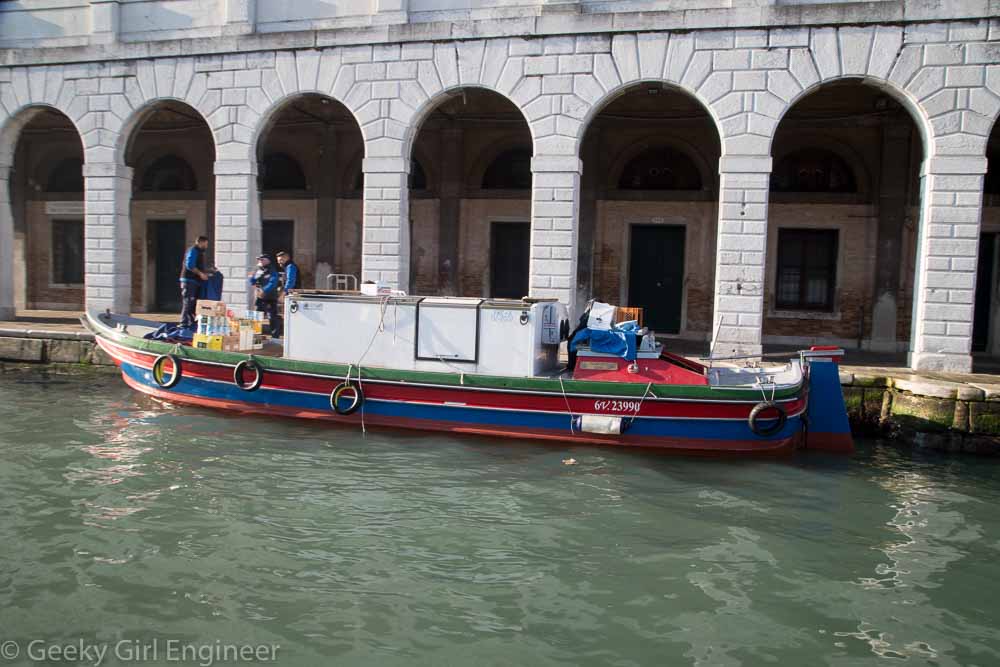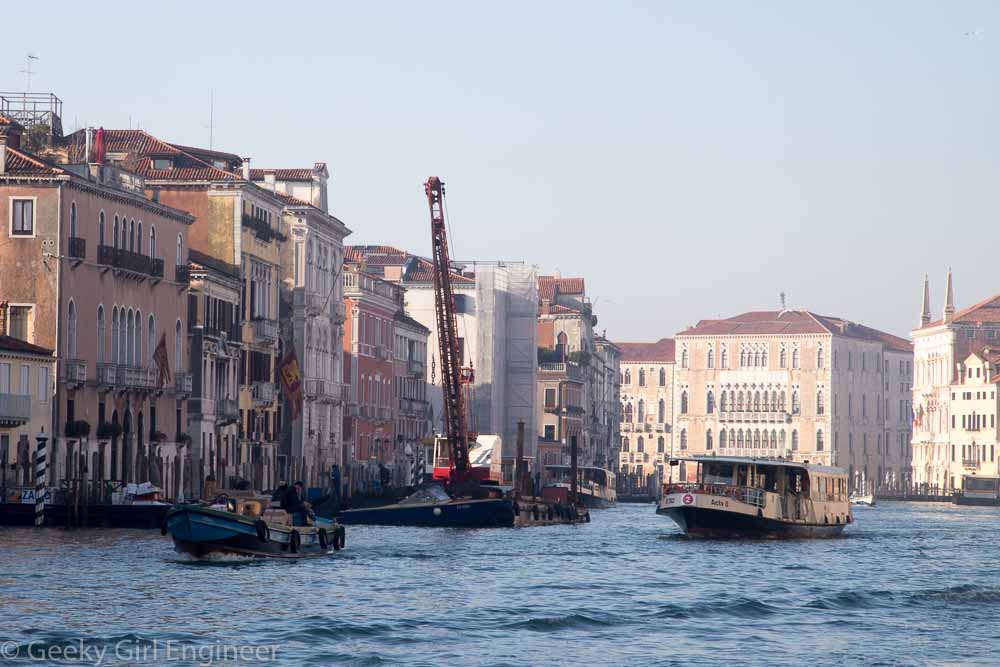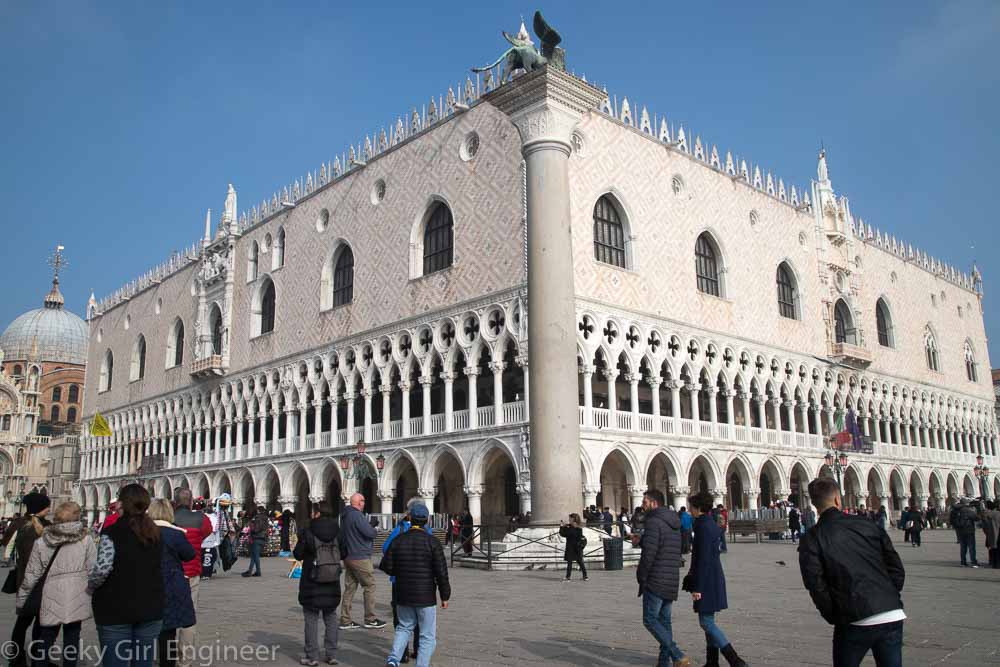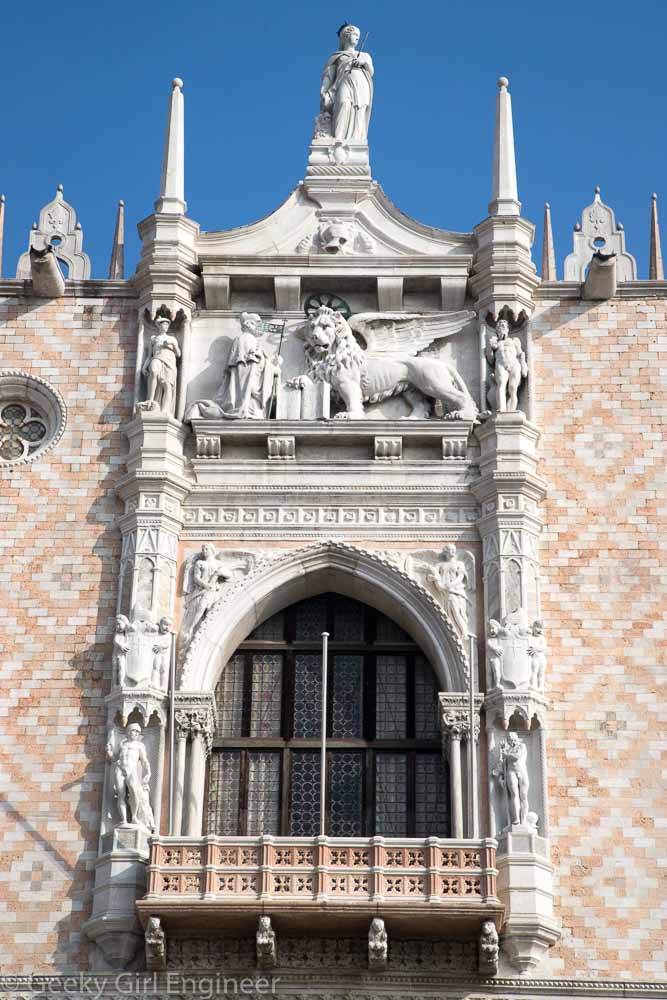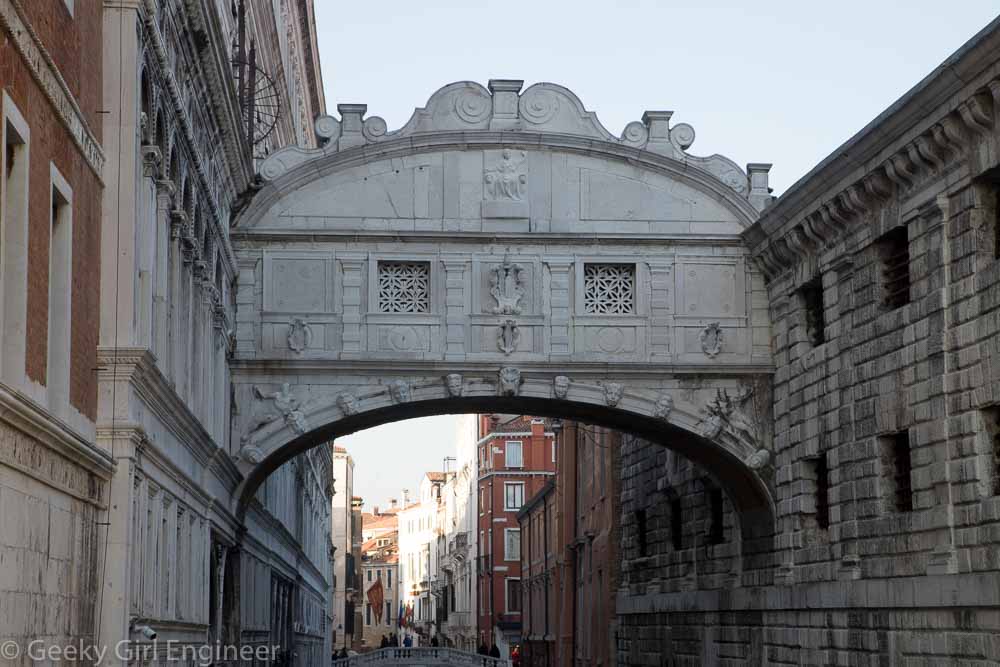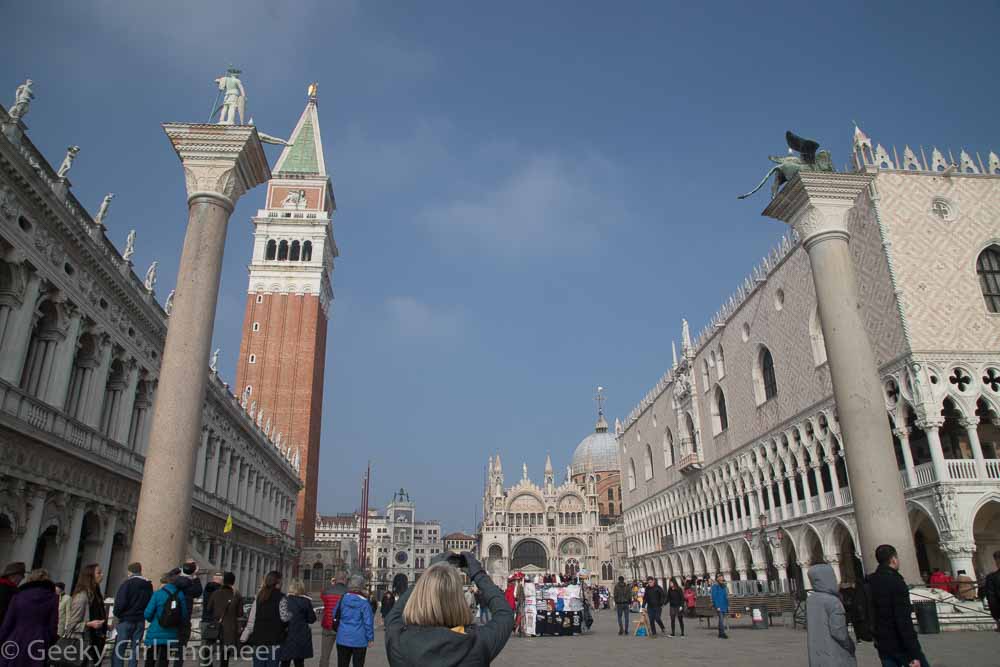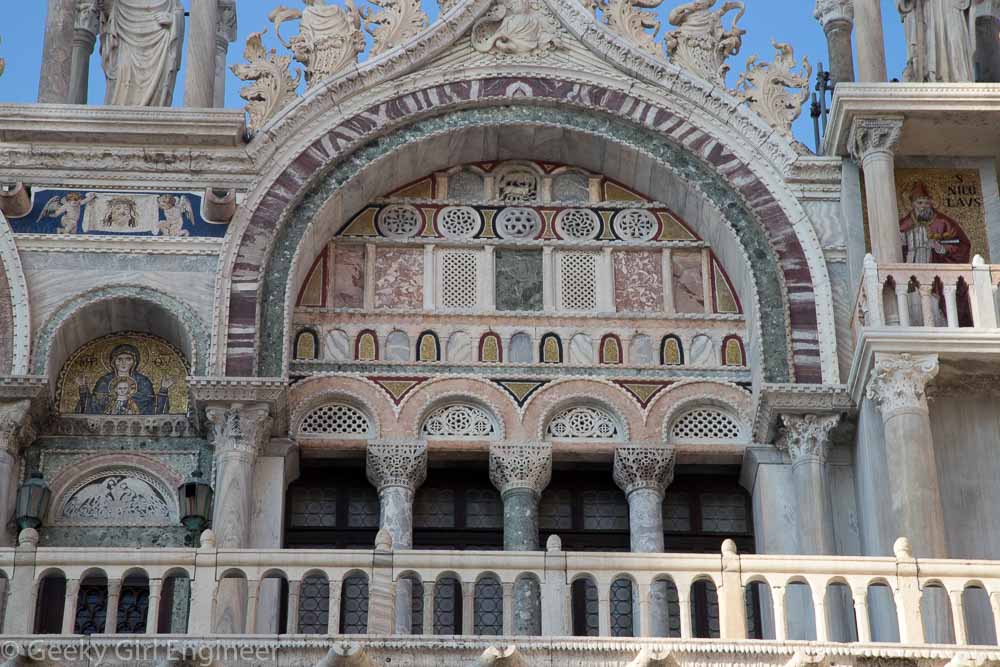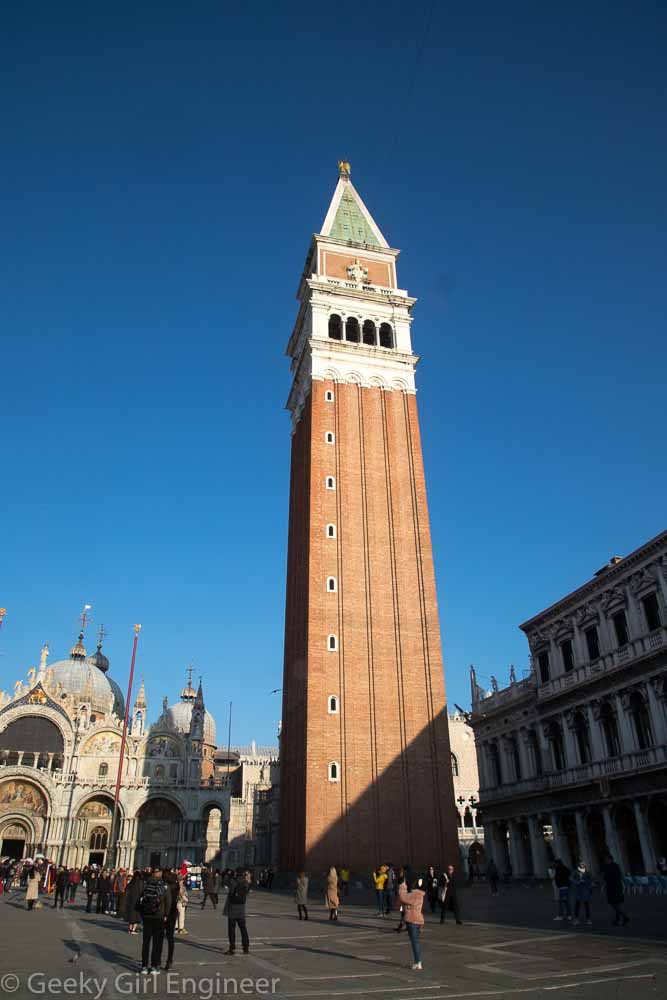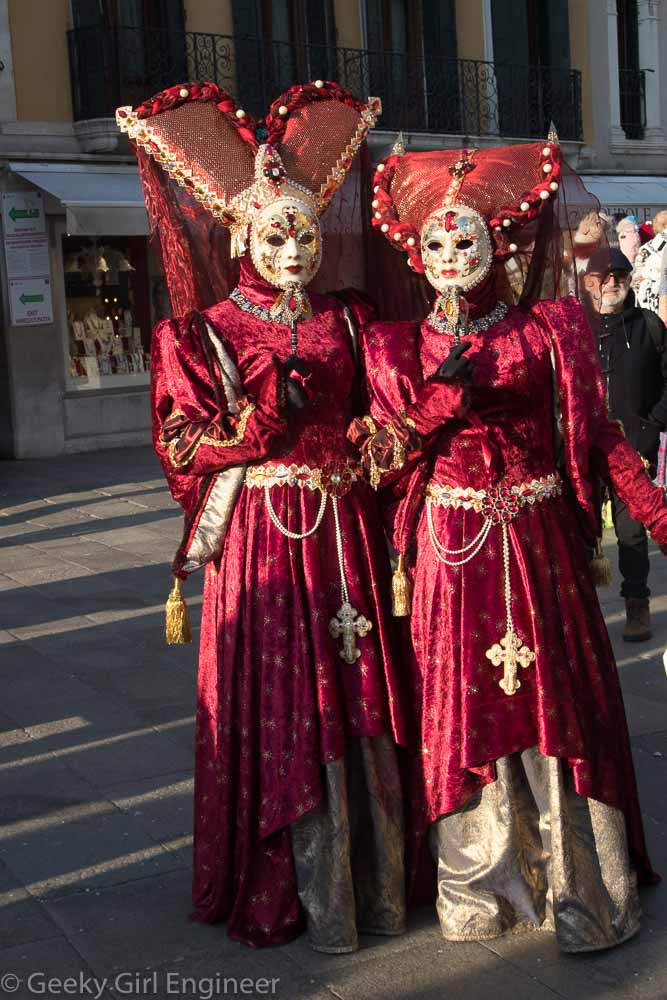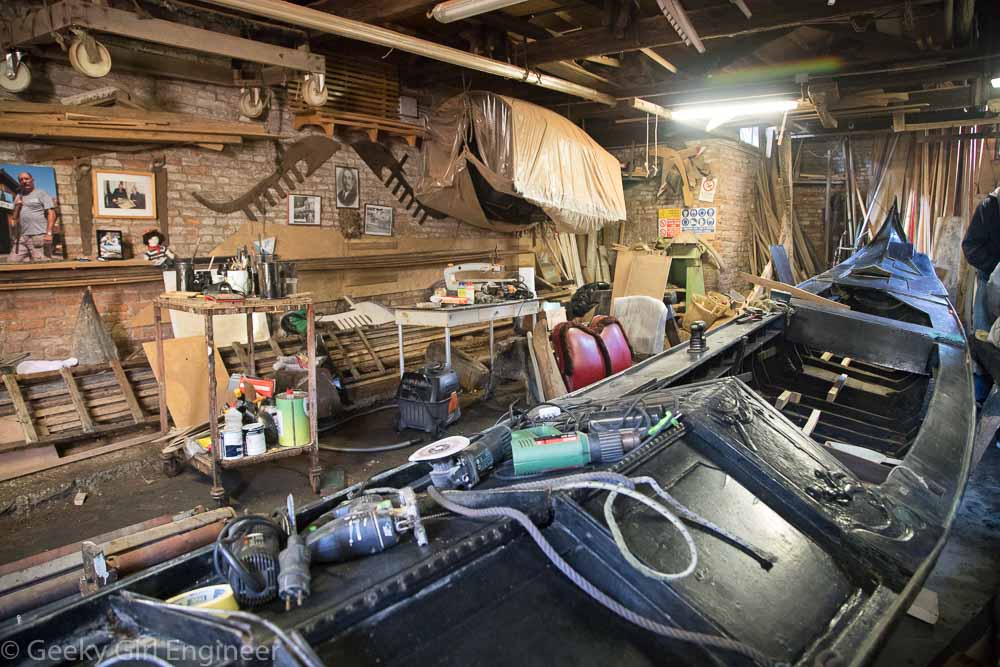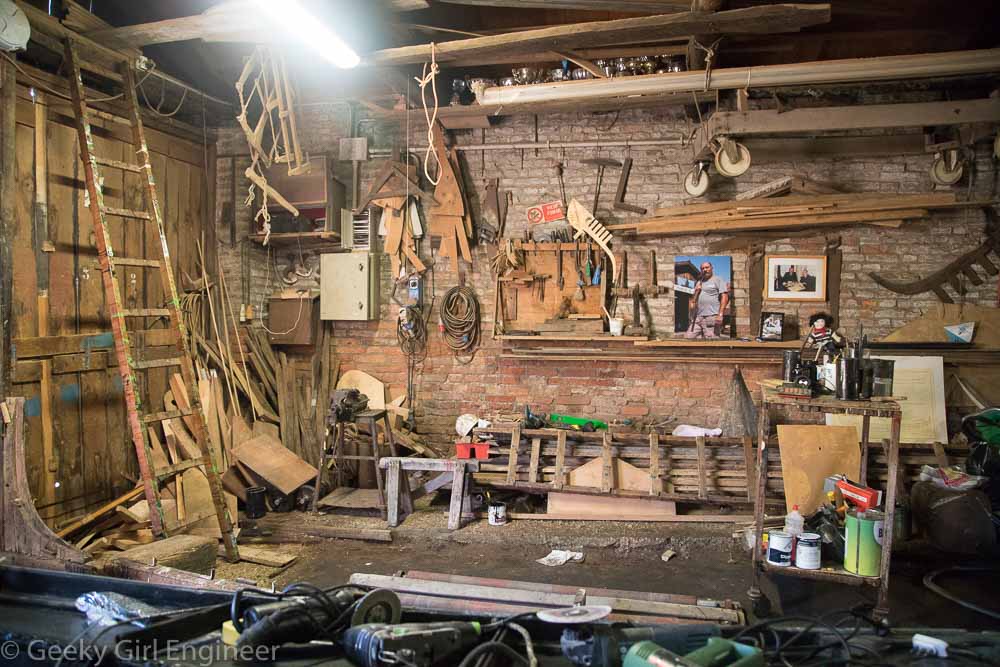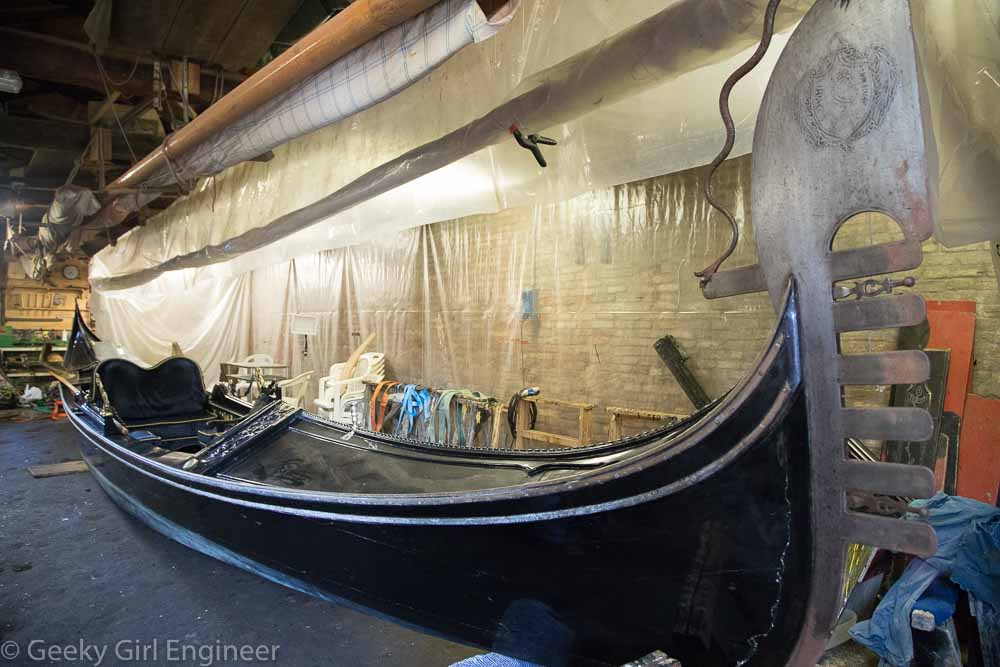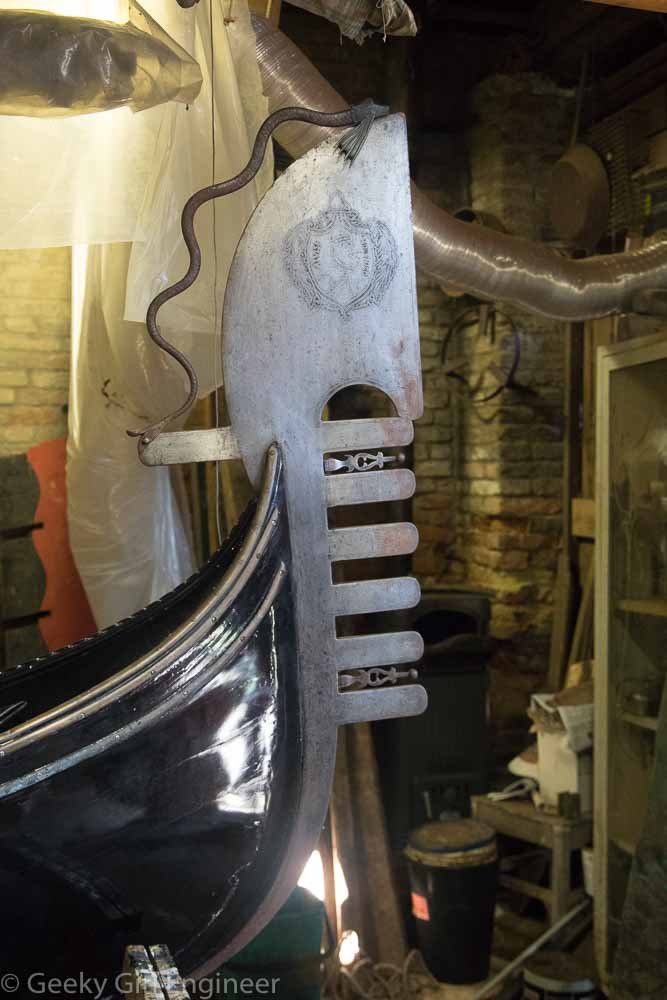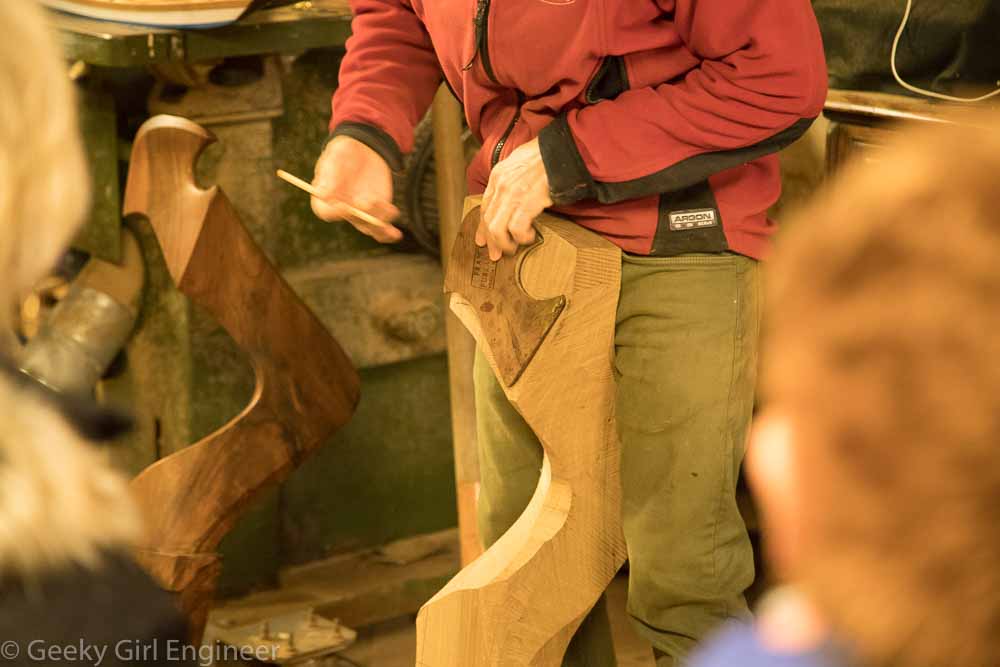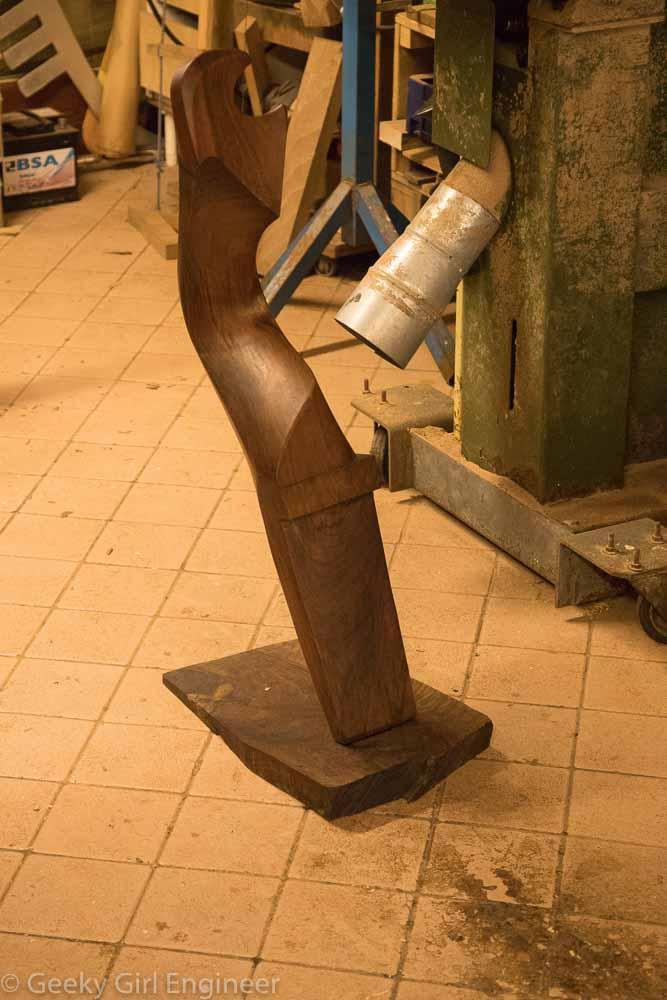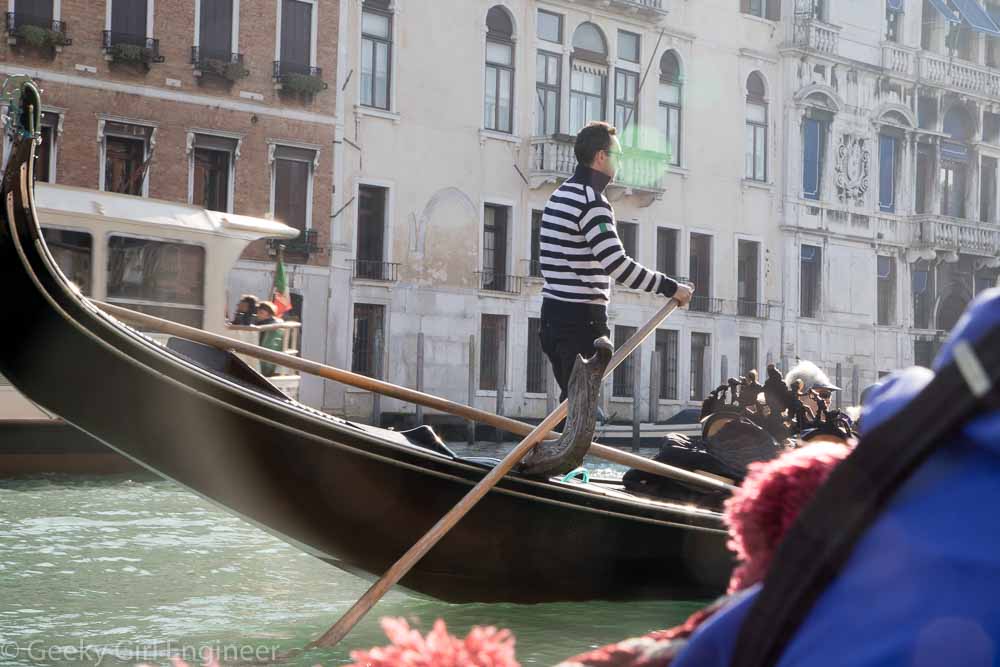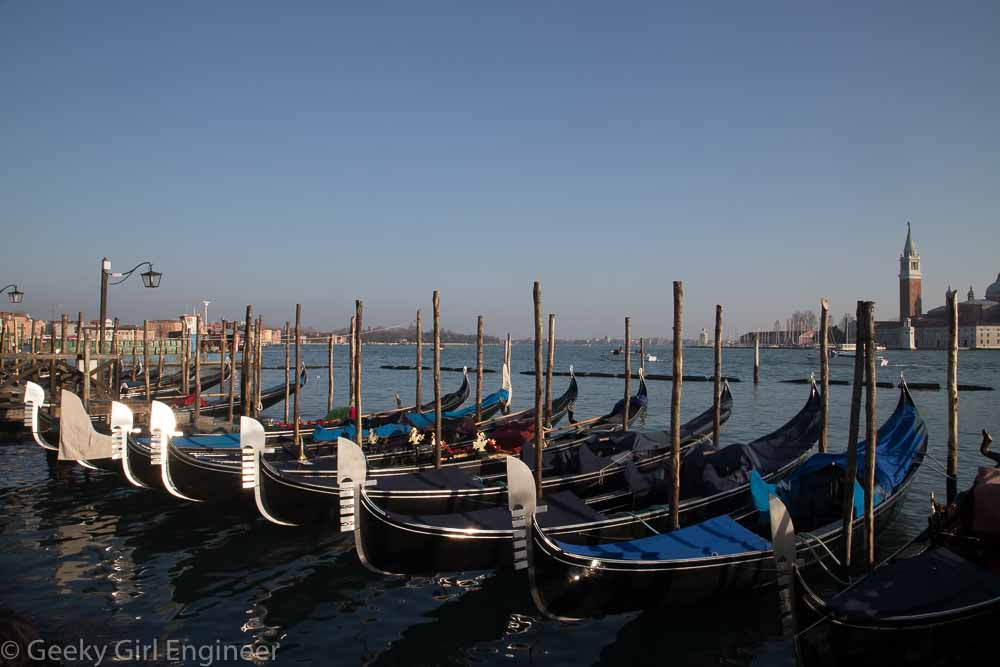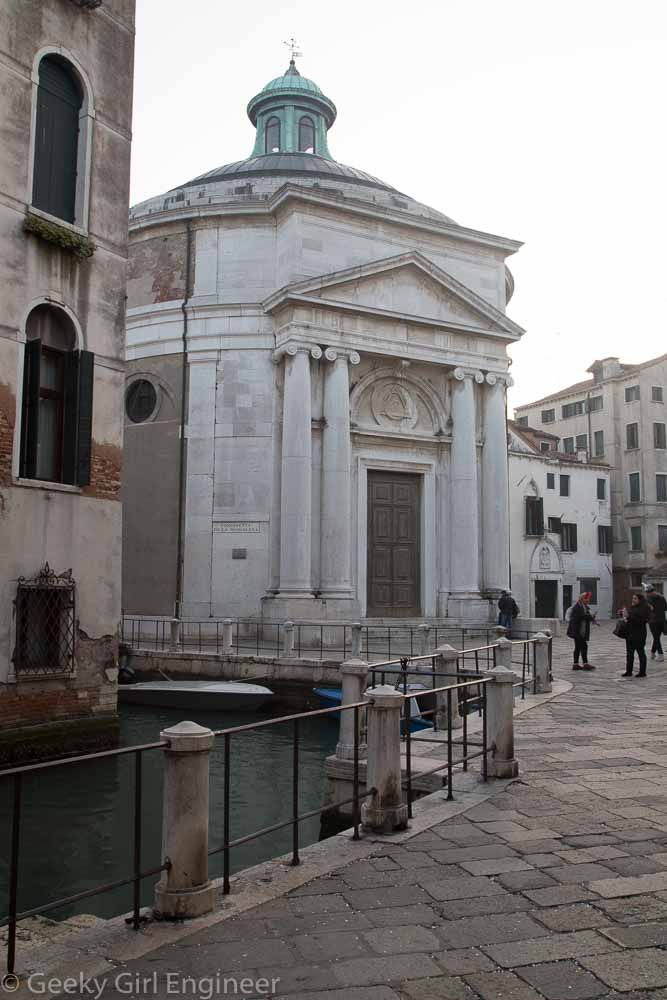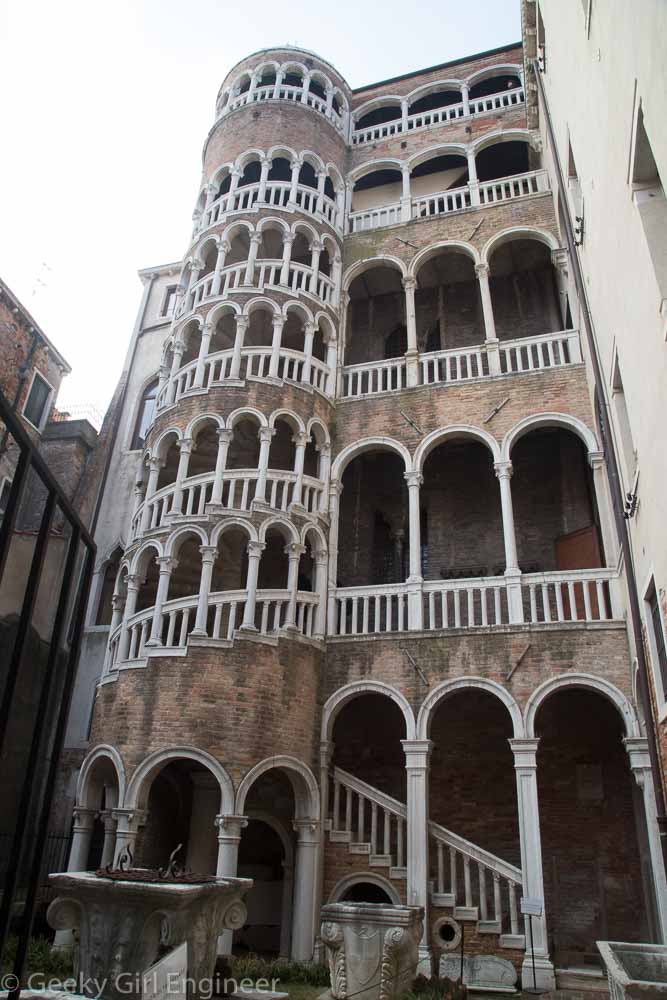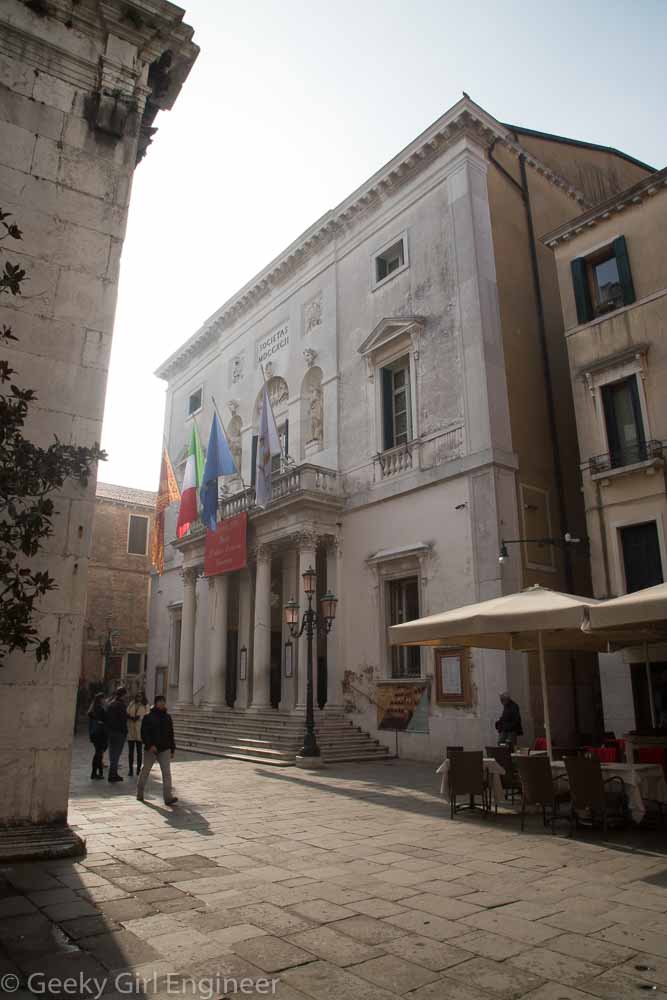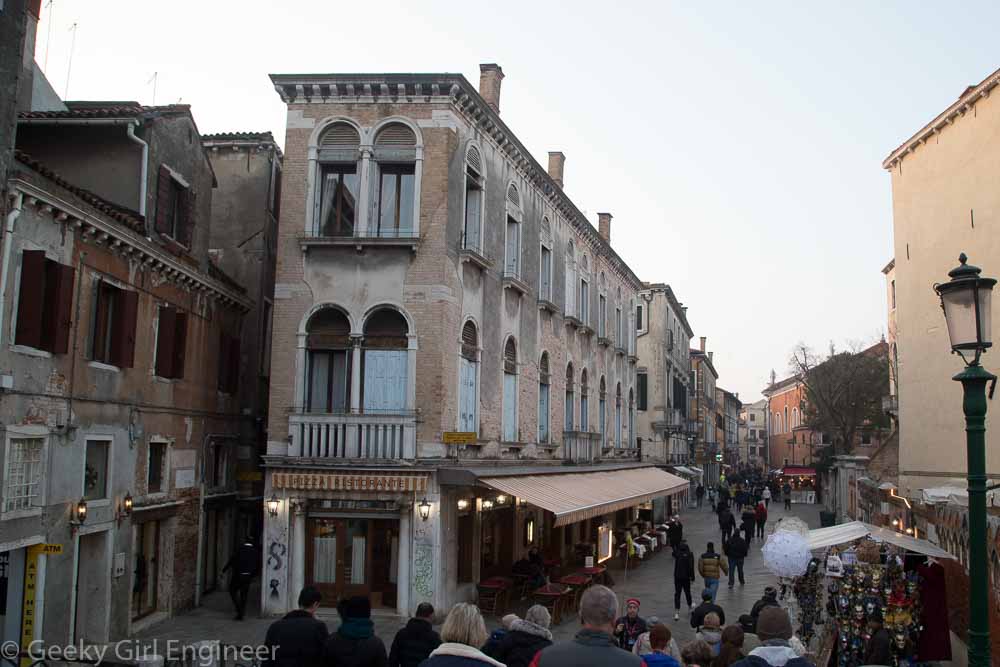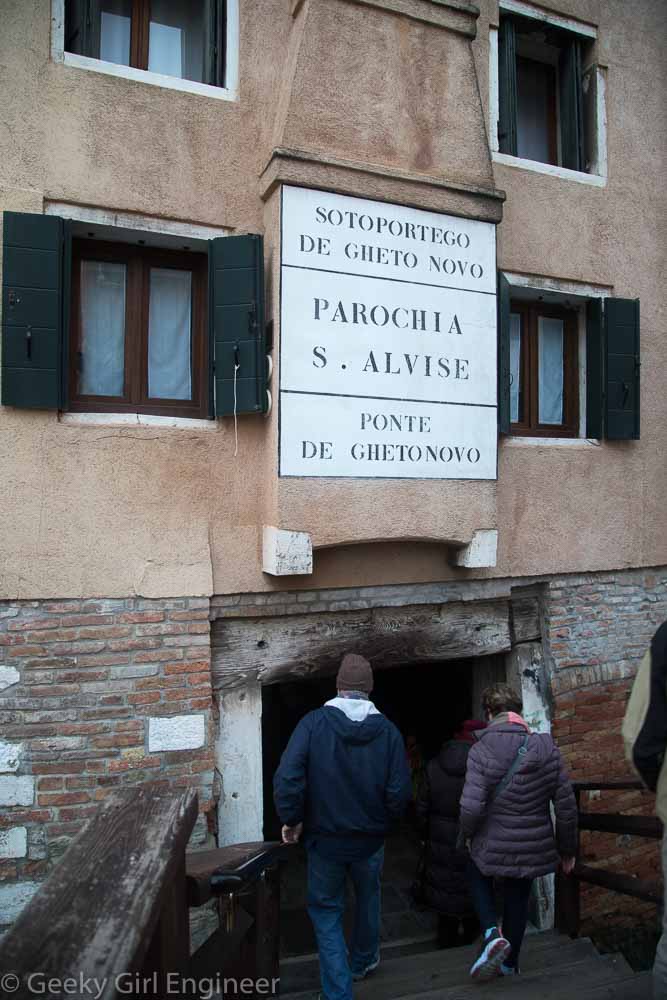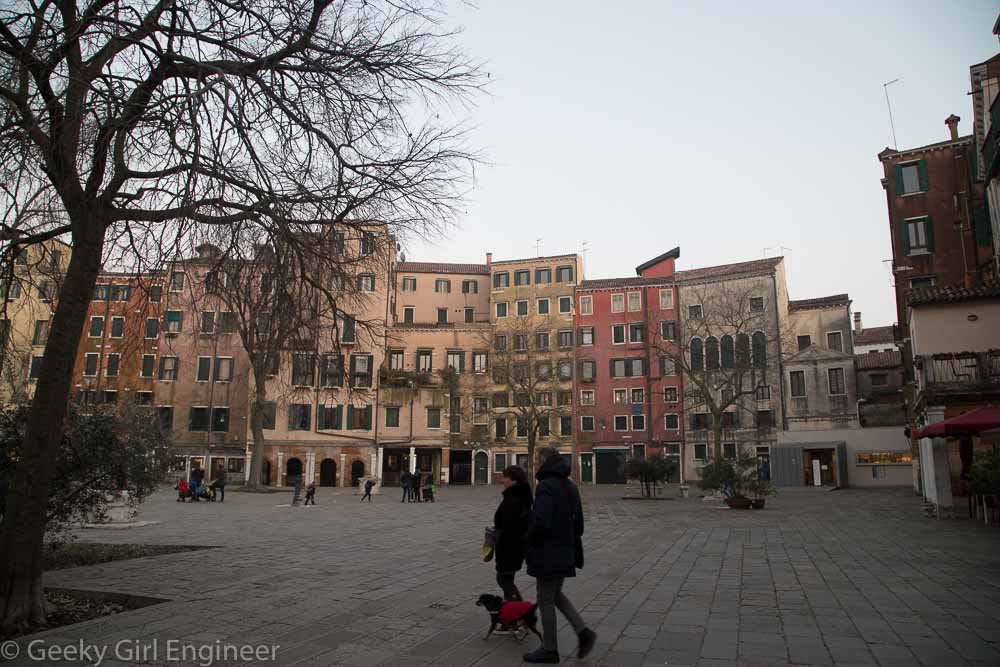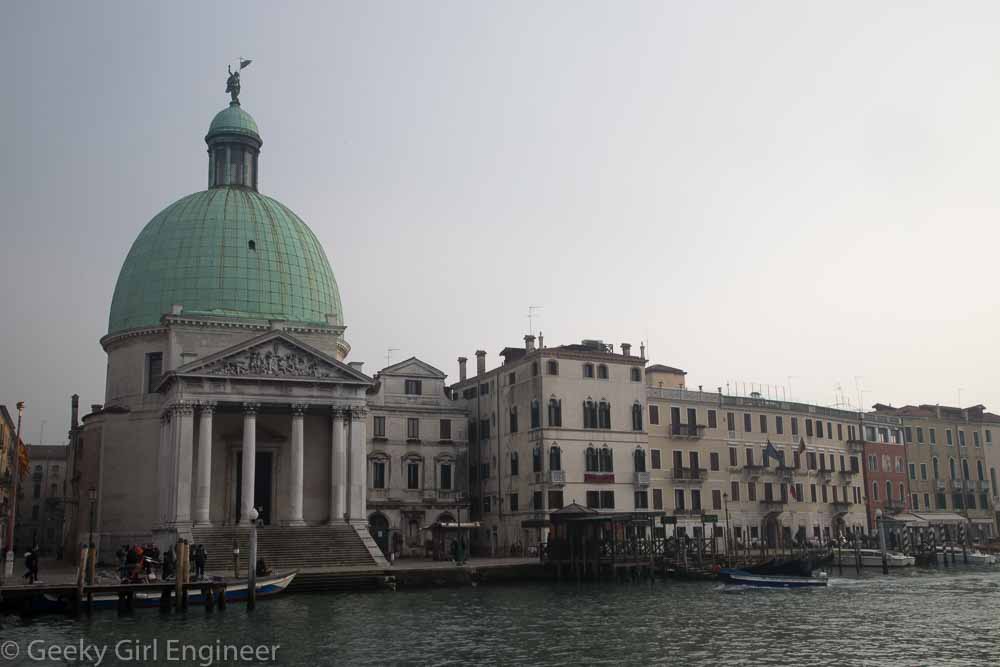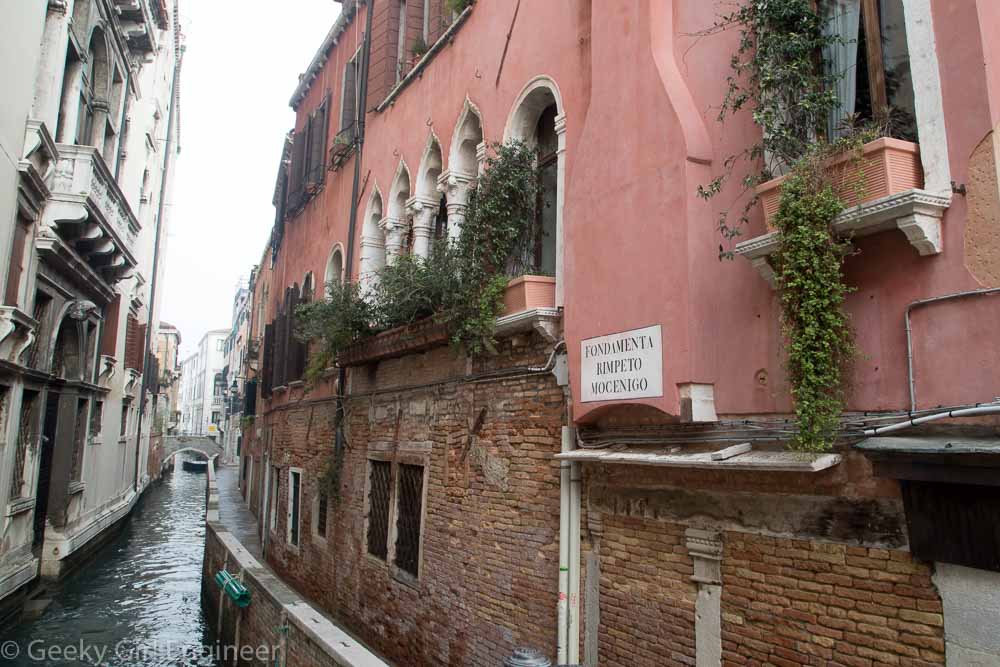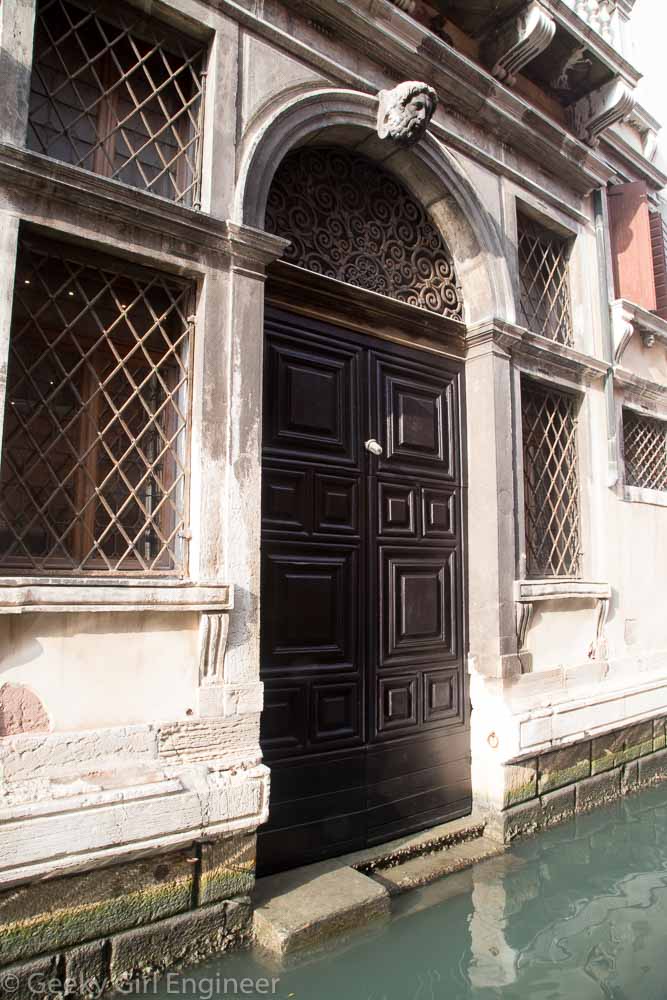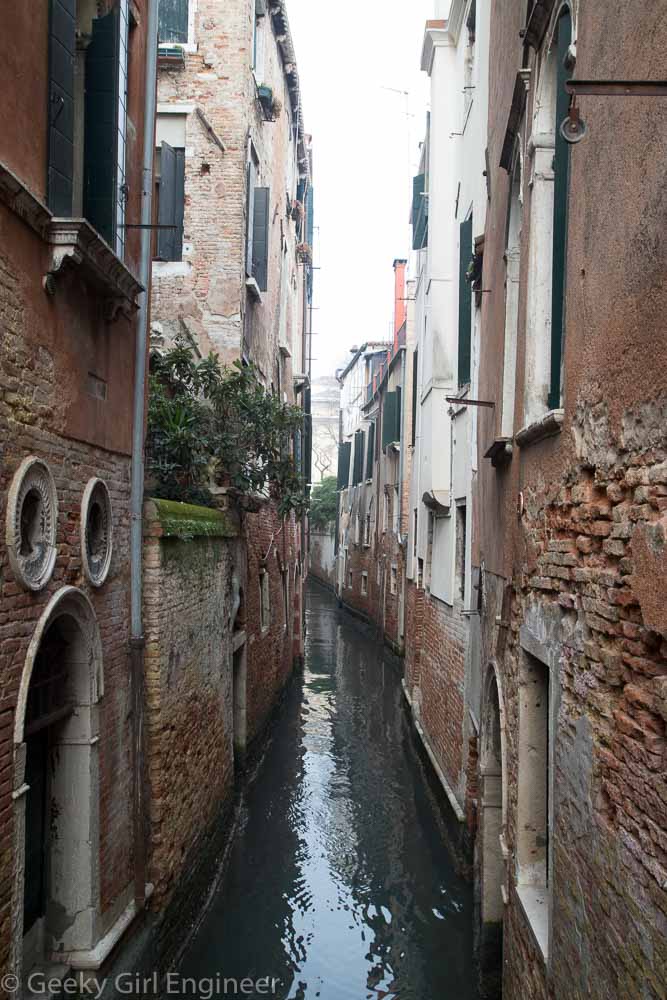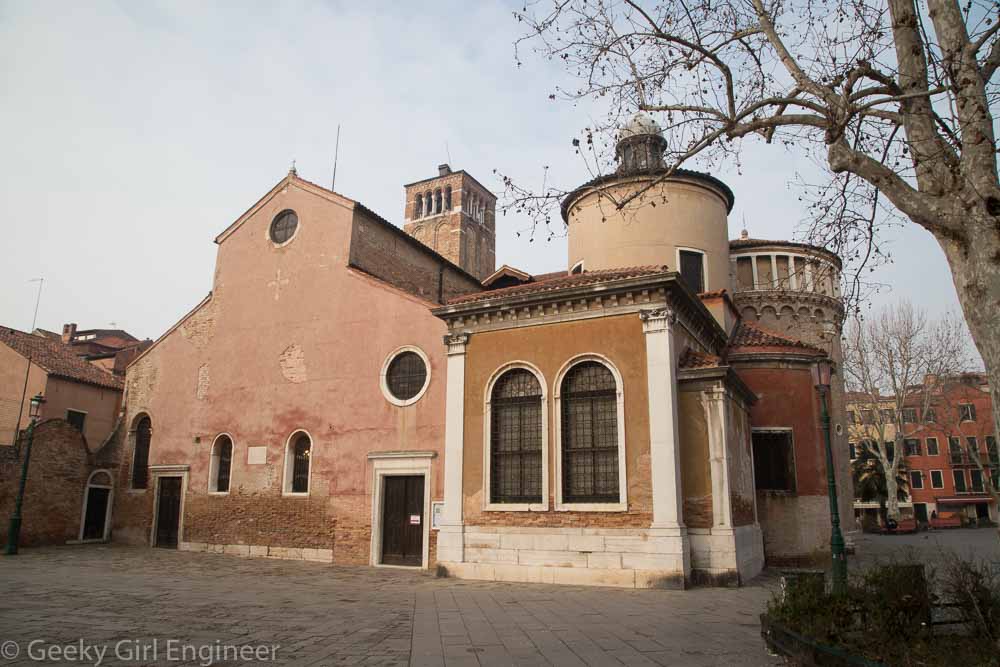I have been to Venice once before this trip. It was probably 20 years ago, and I was with my family in Venice for a day or so. I remember Piazzo San Marco and bridges. We took the train there. That is for the most part what I remember. I do remember getting lost at one point. However, I once read that you have not truly visited Venice until you have been lost in Venice.
Today was my last day in Venice. We took a walking tour with our guide and visited a few sites, and then we had some free time before we had to be back at the hotel to then go to our ship. My friend and I looked in a few shops and bought a few items, and then we walked a bit. We didn’t really have anywhere else we wanted to go, and we had a couple of hours. After we had walked a little, we started seeing signs for “alla ferrovia” (to the train station). We knew how to get from the train station to our hotel, so instead of taking the water bus back to the hotel, we decided just to start walking to the train station. I was sure we would eventually see something familiar, and we would not have to walk all the way to the train station. However, we had plenty of time, and both of us thought a walk would be nice, so we started walking. We walked leisurely and looked in shops along the way. At one point, we looked inside a shop and recognized some magnets that are handmade by the artisan who we visited yesterday who makes forculas for gondolas. I thought some other shop must sell his little trinkets. [I bought one yesterday. They are nice, unique trinkets.] My friend said no, I think this is his shop. I said no, we are no where near his shop how can that be. Then we both saw his dog. I still could not believe we were at this shop, so I wondered why his dog was in someone’s else’s shop. Then he appeared. We waved and said hi and spoke for minute to also say hi to the dog. I am still not sure how we went by his shop. We kept following the signs to the ferrovia, and we made it there, but not by a common route to our hotel. We went back via the route we knew to our hotel and got back in plenty of time. We probably took the longest route back to our hotel possible without crossing Canal Grande. I feel like I have now really been to Venice.
Now, I am on my cruise ship leaving Venice, and I only really got a taste of this wonderful city. I hope to return one day, and I hope the city is still around for me to return to one day.
